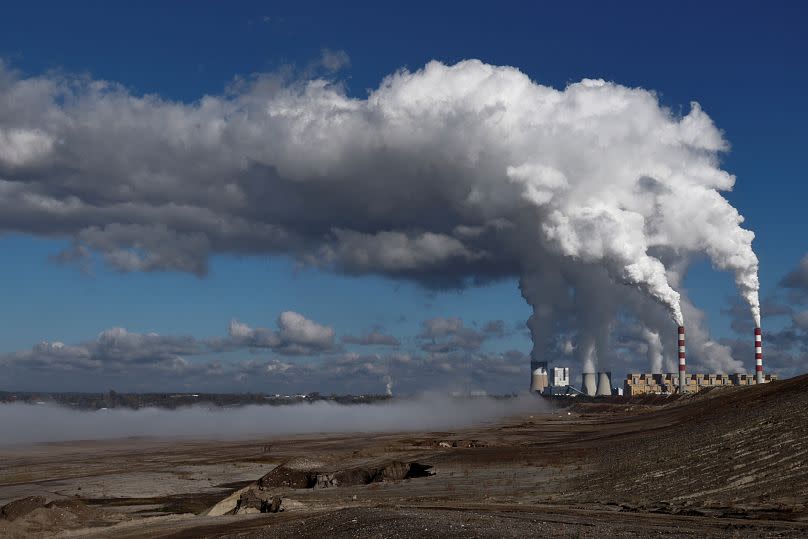Wind and solar overtake fossil fuels in the EU as energy transition hits ‘hyperdrive’

Wind and solar produced more energy in the EU during May than all fossil fuels combined, according to energy think tank Ember.
This is the first full month on record where these renewables produced more power - with almost a third of the bloc’s electricity coming from wind and solar. Fossil fuels generated a record low of 27 per cent.
“Europe’s electricity transition has hit hyperdrive,” says Ember’s Europe lead Sarah Brown.
“Clean power keeps smashing record after record."
‘Electricity sinkhole’ or ‘important step forward’? Swiss citizens to vote on new climate law
Italy wastes enough water for 43 million people a year - can it fix its leaky pipes?
What has driven the EU’s renewable power growth?
Ember’s data says that growth in solar power, strong performance from wind and low electricity demand were behind the record.
Solar alone generated 14 per cent of the EU’s electricity in May: an all-time high.
Even without the summer sun, it overtook coal power for the first time which produced just a tenth of the total last month.
Electricity generation from wind power also grew compared to May last year. But didn’t quite reach a record set in January this year where it contributed 23 per cent of the bloc’s power.

A push to install new renewables has also caused fossil fuel generation to fall from January to May this year, allowing solar and wind to overtake.
Portugal installed 0.9 GW of solar photovoltaics in 2022, increasing its solar capacity by more than 50 per cent to 2.5 GW - enough to power around 1 million homes. This extra capacity pushed the country’s wind and solar generation to over 50 per cent of electricity production in April.
Other EU nations, including Spain, Sweden and Belgium have also hit all-time highs for renewable generation this year.
Fossil fuel power is falling in the EU
With coal generating just 10 per cent of power and gas reaching its lowest share since 2018 at 15 per cent, fossil fuel power is continuing to fall in the EU. Ember says it is a trend that has continued from late 2022 into the first months of this year.
Coal reached a record low in May - even in European countries that have previously relied heavily on this fossil fuel. Despite closing its last nuclear power plants in April, coal fell to its lowest level in Germany since 2020.

In Poland, one of the biggest coal power producers in Europe, generation also fell to an all-time low at 62 per cent.
EU-wide drops in fossil fuel power are reflected in the figures from many countries.
Fatal air pollution and decimated fish stocks: Inside the urgent mission to save Yemen’s oil tanker
Iceland is our Green European country of the month - here’s why
Wind and solar to emerge as the ‘backbone’ of EU electricity this year
The news comes as Italy this week said it could shut down its coal-fired power stations by 2024 - a year earlier than planned - if gas prices remain low.
The use of gas is falling too, however, with Ember’s Europe Electricity Review from January showing that wind and solar became the EU’s top electricity source for the first time in 2022.
Record amounts of new wind and solar helped the bloc to avoid the “triple crisis” of restrictions on Russian gas supplies, problems with hydropower due to drought and unexpected nuclear outages.
“Not only did coal power set new lows, but gas is also tumbling,” says Brown.
“The EU is on track for a huge collapse in fossil power this year, as wind and solar emerge as the backbone of the future electricity system.”

 Yahoo Sport
Yahoo Sport 





































